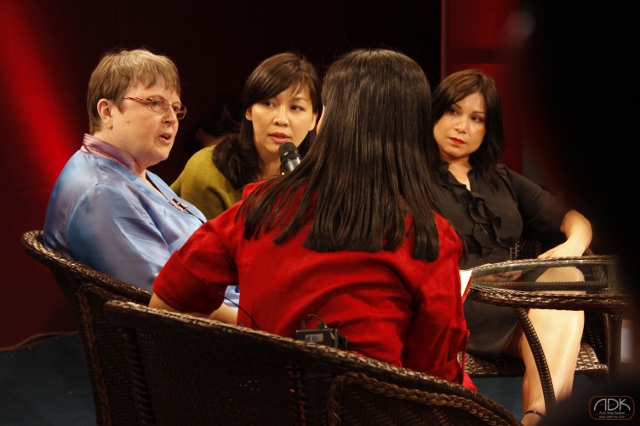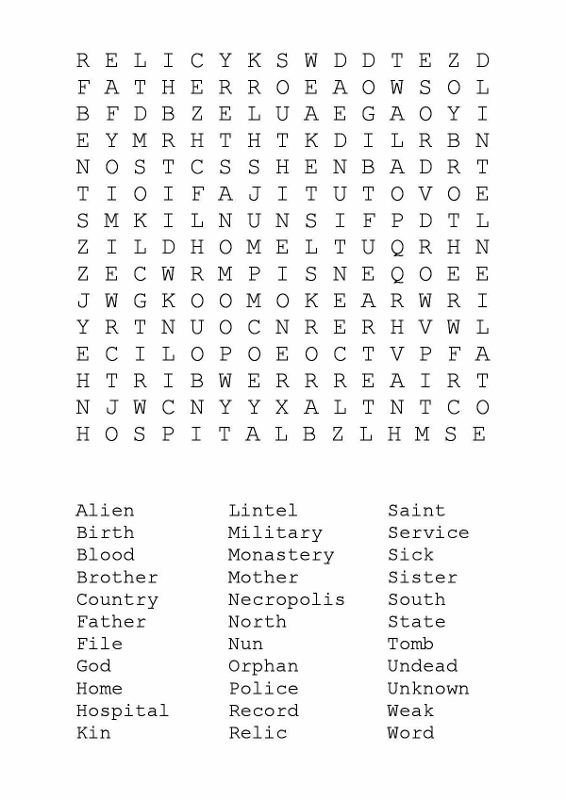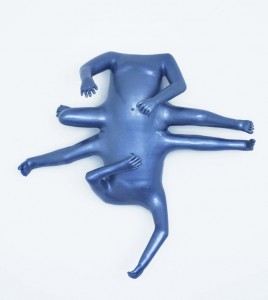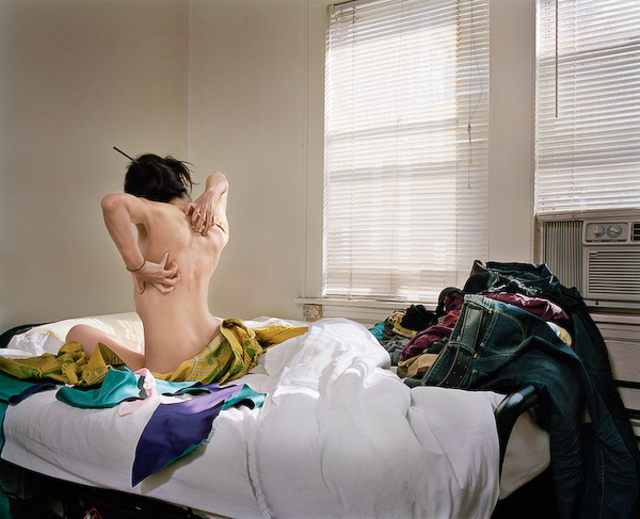Jennifer Kwon Dobbs, inquiring into a poetics emerging from the adopted diasporic condition, guest-curates a portfolio of poems for The Line Break.
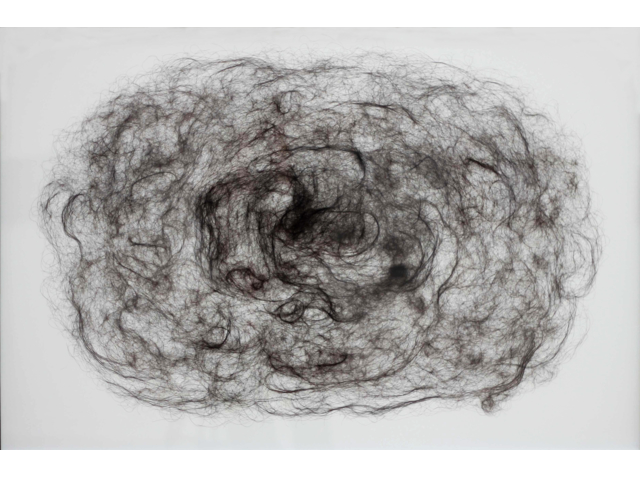
July 5, 2013
Although readers may be tempted to file this collection under “adoptee writing,” they might instead take notice of how these aesthetically diverse poems enact an urgent poetics emerging from displacement by war, militarism, poverty, social stigma against single mothers, neoliberal outsourcing of social welfare, and cultural and linguistic loss. In the not-so-distant past, to write from these conditions of orphaning would have been tantamount to expressing ingratitude, but today, to do so is to lay claim to history and to summon artistic and communal relatives for a poet’s task.
The poets in this portfolio are epic in sweep yet lyrically intense in contingencies of feeling and knowing. Their work recalls Myung Mi Kim’s definition of poetics as “that activity tending the speculative.” Yet unlike the witness who remembers history or who can turn to birth family or ethnic community to ask, the poet writing from an adopted diasporic condition oftentimes cannot testify to the events that orphaned her or him. These conditions retain an uncanny presence in her/his dream life.
Out of necessity, this poet speculates and stages as a way to make sense of haunting absences, divided geographies, socially deadened filiations, lost or sealed documents, bodies used by and buried under post-Cold War economic boom/bust:
The children, recorded, a homestead of lung and eye
—Sun Yung Shin, “[Orphanotrophia]”
Museums of burials, the underground of giving birth to birth
The poet reconstructs a site of orphaning as a site of crucial encounter and naming:
To shield you from the bullets stilling hanging in the sky.
—Kevin Minh Allen, “When Home Is Not Enough”
I’ve mastered the silence of your existence,
but now I shout your name in this dark cave.
Wherefore all this memory work? In Bryan Thao Worra’s “Songkran Niyomsane’s Forensic Medicine Museum, 2003,” birth family are released from administrative processing and revivified in a way that’s only possible in a poem:
I wondered if my mother, making her way across
The Mekong for a new life, might have found herself here
Tucked in a drawer anonymously among these samples
Of flesh, these cold cases in a tropical nation.
While editing this portfolio, I looked for work aware of its adopted diasporic condition yet committed to the task of making a poem. Whether speculating, searching, dismantling, reunifying, or something else altogether, language that seemed transcribed “at the interstices of the abbreviated,” as Kim writes, “the oddly conjoined, the amalgamated—recognizing that language occurs under continual construction” attracted me the most. At the same time, I sought to diversify this issue, keeping in mind that a fully representative cross-section wasn’t possible given space limitations. Working within these constraints, I also solicited artwork to punctuate the issue and to invite dialogue among the poems.
This portfolio might be considered a meeting place to reconcile Cold War histories and legacies from which an adopted person is amputated and estranged. In this way, the poems are both intimate and political by virtue of their restless insistence on wholeness and peace. I’m reminded of Muriel Rukeyser’s Life of Poetry: “Until the peace makes its people, its forests, and its living cities; in that burning central life, and wherever we live, there is the place for poetry.”
And in this place, we shall make another peace:
She goes to the window, opening
—Nicky Sa-eun Schildkraut, “a modern ghost family”
it to a crack, to feel the salty wind
against her face, to feel
the beginnings of danger.
—Jennifer Kwon Dobbs
1. “When Home Is Not Enough” by Kevin Minh Allen
2. “[Orphanotrophia]” and ”[Tumuli]” by Sun Yung Shin
3. “Untitled” and “14.5833° N, 121.0000° E” by Lisa Marie Rollins
4. “How to Divide a Peninsula” and “No Gun Ri, or The Battle That Wasn’t“ by Katie Hae Leo
5. “a modern ghost family” by Nicky Sa-eun Schildkraut
6. “Songkran Niyomsane’s Forensic Medicine Museum, 2003” by Bryan Thao Worra
7. “Fruit“ and ”Dear Satomi Shirai” by Molly Gaudry
8. “Gardening Secrets of the Dead” Lee Herrick
When Home Is Not Enough
by Kevin Minh Allen
Shrouded in rumor, your secrets were unraveling,
and the swelling underneath your blouse
was no longer a question of if but when.
Away you were sent to lie in a bed of lice and dried shrimp
in a village hostile to yet another bastard
who will end up begging for forgiveness.
But, here I am, back from the deep well they tried to drown me in.
To disarm the landmines buried in your field of vision.
To shield you from the bullets still hanging in the sky.
I’ve mastered the silence of your existence,
but now I shout your name in this dark cave.
And, if you never answer me?
Have you moved onto another village, another family?
What if it’s true when they say
that mosquitoes only return to the swarm
in the form of a warm memory,
however indecipherable?
[Orphanotrophia]
by Sun Yung Shin
A broad black market
The women are urnfields
The children are binding out
Dark in the trains, a burning mouth to eat a shovelful of black diamonds
Leak blood, trickle milk, time weeps
Going over the falls
Washing to shore, done and undone
Law-and-order, over the falls
Body paint, black ink and brush, state and subject
Eat silver and sugar
Tobacco hair and a hospital all in gold leaf
Baby Jesus in the alley, bright baby in a bullet
Time branching everywhere like hair
Custody this antebellum apprentice
Rows of graves—keep spilling the liquor
City of the dead, written from right to left
The women stand image and likeness
The women occur copy and heir
The children, recorded, a homestead of lung and eye
Museums of burials, the underground of giving birth to birth
[TUMULI]
by Sun Yung Shin
Untitled
by Lisa Marie Rollins
“Who claims this child?” James Cagney
Come on home, my dad says. He says it as if I am still 15, having run
away – again. As if coming home will make everything right, and
as if I am able to conjure up my 12 year old self. The self who
believes in his God the father, the one slowly seeing cracks in ‘if I
just pray hard enough’. If I just pray hard enough maybe I will
forget I am alien inside my own church walls, pews smelling like
mink oil, the bread of life stale and the wintry eyes of the assistant
pastor when he sees me during youth group.
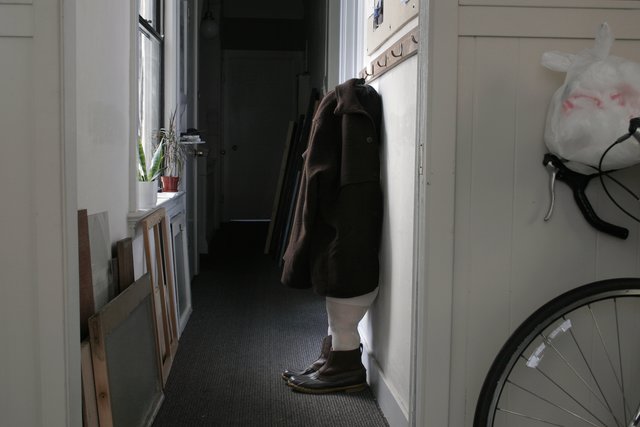
14.5833° N, 121.0000° E
by Lisa Marie Rollins
“This Many Miles from Desire” – Lee Herrick
it is two thousand four hundred and six miles from Oakland to Molokai, Hawaii
six thousand nine hundred eighty five to Manila, Philippines,
somewhere in between and outside is where I look for you
for my face in photos you sent me
alongside photos I have stolen
from my sisters webpage
tiny mirrors on the wall
if I turn my head
just right
How to Divide a Peninsula
by Katie Hae Leo
Here is a table. It is a good table. We agree that this table must be spread, like all good tables. But what to spread it with? Here is a fine linen, here silk, here cotton, here a stiff wool. Each will share the beauty of this table. As a child I often sat under a table but never once thought about what the table wanted. Only legs and laps, only who owned them and what they meant to me. Such is the strange fate of tables. To exist only as we use them. Tables do not know what they want. Tables know heat and cold and the hands that touch them. They measure time in flakes of wood. If they could speak, their voices would be filled with dirt.
No Gun Ri, or The Battle That Wasn’t
by Katie Hae Leo
Four hundred porcelain cups lie broken in the sun. Who will take responsibility?
The policy regarding cups dictates that all cups must first apply to the Bureau of Ceramic Housewares for permission to assemble in open fields. This includes but is not limited to tea parties, picnics, family reunions, and outdoor banquets.
The official position on destruction of fine china is illustrated in a letter from the Ambassador of Dining to the Undersecretary of Kitchen Behavior. In this letter the ambassador worries that the extermination of unauthorized cups within the conflict zone might damage relations between tea drinking countries.
Remains of broken cups are still being discovered throughout the land. If cups had souls, they would roam the streets, unsatisfied.
Meanwhile, the Ministry of Collective Memory asks that all persons with knowledge of the cup incident report to their local branch, where they will be rewarded with a Starbucks gift card and a lifetime subscription to People magazine.
a modern ghost family
by Nicky Sa-eun Schildkraut
Act I.
In the film, a widower holds an audition
for a new wife. As each woman
steps into the closet, selecting a dress
for the rehearsal wedding, he sees
the right one, a young actress in simple
white cotton. There is no need to even
ask her name, or origin: she fits
inside each of his dreams of her
as a slight ballerina, a rising star
who fills his mouth with snow
on their wedding night, as he tells her
after she removes her simple
white cotton, “you are the only one
I will ever truly love.
Repeat after me: you are the only one
I will ever truly love.”
*
“It’s a post-war story, set in the backdrop of a city
rebuilding itself as a cosmotropolis.” The director explains,
“ Some of the war victims have undergone complete
facial transformations, surgical miracles,
in order to forget their former lives,
reinvent themselves. It’s an era of post-melancholia,
post-memory,” he pauses and lights a cigarette,
“there’s no longer any sense of the authentic,
or the individual. Everything is staged.”
*
“I wish I knew you,” the younger, second wife
touches the first wife’s face in the photograph.
“I’ve gotten so used to inheriting your odds-and-ends.”
Everyday, from the closet she slips on blue,
scuffed sandals and slip-dresses that fit
loosely around the waist. “If you were me, you
would laugh,” she says, laughing to hear
herself in the empty house, day after day.
She can smell the odd mixture
of jasmine perfume and cigarettes
seeped into the sleeves of the robe as she cleans
dishes, pantomiming the ghost-wife
as she fits her photograph inside a new silver frame.
“One day, I’ll be like you,” she whispers
to her, “immortal.”
*
The director writes another scene:
in flashback, with surreal, gray tones
like a dream sequence, the leading man
embraces his first wife in a boat with huge sails.
They look perfect, a movie-couple
beneath stars and full moon.
“I’ll never feel as lonely, again,” she says to him,
“as long as you stay here.” But the storm
above is gathering, a shock of black clouds
and relentless wind, as they escape inside
the cabin. She goes to the window, opening
it to a crack, to feel the salty wind
against her face, to feel
the beginnings of danger.
Act II.
The next day, the couple visits the studio
for another special audition. This time, second wife
is dressed in a yellow kimono, her hair upswept
in a messy bun. She enters the stage of the kitchen,
distraught, looking for something, her lines unclear,
clearly mad. From the front row, a small girl with a shaved
head gasps, pointing at her, “that’s her!” She runs
onstage, pulling the kimono off her shoulders,
exclaiming, “it’s her! I want her to be my
mother!” The director is laughing,
uncomfortably relieved now,
watching his distressed wife and this new,
grateful daughter embrace onstage.
*
According to the script: when the first wife
returns, not from the land of the dead, but
from the fully living, everyone is in shock.
It was a restful trip, she says, standing
in the living room that is no longer her color,
but painted over in blues.
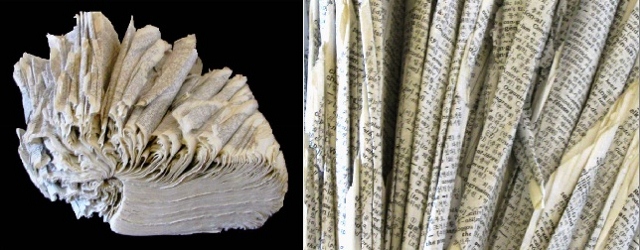
Songkran Niyomsane’s Forensic Medicine Museum, 2003
by Bryan Thao Worra
Behind the Siriraj Hospital in Bangkok:
The Chinese cannibal’s corpse
Was stuffed and hung in a glass box.
His bad orthodontia flickers like nightlights
After hours.
Honestly, he’s a bad piece
Of shoe leather. Rancid jerky.
Impolitic students visiting the second floor
Contemplate Rama VIII as the Thai JFK.
Head doctors confirm
An uncommon number
Of unclaimed corpses
Received a single bullet
in the forehead
To study the methods
Of modern regicide.
Periwinkle tile and placid aquariums
Among imperfect babies soaking
Within dusty beakers of formaldehyde
Are supposed to soothe you on your tour.
A brown clay jar on the floor
Slowly fills with baht
For the solitary soul of a tiny boy
Crammed inside to suffocate by his last enemies
In the world.
Reach inside.
You’ll feel a young ghost’s hand
reach back, looking for toys.
I wondered if my mother, making her way across
The Mekong for a new life, might have found herself here
Tucked in a drawer anonymously among these samples
Of flesh, these cold cases in a tropical nation.
Behind you, Dr. Niyomsane’s own cadaver chuckles
From a clean hook, the eternal student, daring
Tomorrow’s professional investigators
to study him.

FRUIT
by Molly Gaudry
This white peach from the market down the street, its skin in my teeth and juice on my tongue, and how one bite takes me to that morning thunderstorm a decade ago exactly beneath which I met my biological father and later his wife, their daughter, their son, whose six-year-old body curled every night beside my eighteen-year-old anger on the living room floor where we all slept and where I stared into the lush green hills, choking back thoughts, searching those huge white cranes within that thick white morning fog for meaning, the incense burning its citronella spiral through the night. It wasn’t just peaches that summer but nectarines and plums and concord grapes whose skins and pits we piled up, and also green and white and yellow melons and fruit I’d never tasted, but I ate them because that was how we shared and spoke with one another—well, the fruit and the whiskey, the fruit and whiskey and cigarettes. Oh how we drank and how I poured with both hands as a sign of respect, and how that man said six-shots-in one well-past-midnight Monday do not ask me anymore about your mother and how his wife who was everything but the third-world woman I’d assumed all South Korean women were said me and put my hand beneath her breast, said omah, mother, bio-mom, okay and how I looked at her until she said again okay, you say, bio-mom and how I did not answer until days later when I watched her cut the evening fruit and reached and put the pieces in my mouth and when I swallowed said okay and how she shared a cigarette with me after everyone was asleep, and the way we looked out that morning and watched the cranes soar and listened to them cry, not saying anything but leaning, shoulder to shoulder, knowing it would never last, that I would return to America, that I would continue on with my life and so would she with hers. So what we did was eat. We ate that fruit all summer long.
Dear Satomi Shirai,
by Molly Gaudry
Dear Satomi Shirai,
My itch is not your itch, but I still recognize the signs of your transient life—futon, window unit, white unadorned walls, those awful plastic blinds. Do you even have a closet for your clothes?
My own clothes, my desk, my books, my shelves, are in a storage unit awaiting my return, alongside my dead grandmother’s couch and tables, her bed and dresser and nightstand. When I was very little, she used to introduce me like this: This is my granddaughter. She’s adopted.
Years ago, on Christmas Eve, I drank too much at dinner and protested when she wanted to go home early. It was snowing, the roads hadn’t been cleared, and I was tipsy. We got into the car anyway and I told myself to get her home fast, without getting pulled over. I don’t know why, but in the midst of that long drive through all that falling snow, I said, Want to see Grandpa? So we turned around and went in the other direction.
At the nursing home, I waited in the hallway while she went in to see him. They talked for a while and then Grandma said, I love you. Grandpa said, I love you, too. Good bye, Grandma said. Good bye, Grandpa said. They sealed it with a kiss.
I took her home, drove myself home, and my mother met me at the door: Grandpa’s dead. We picked up my grandmother and she climbed into the back seat beside me and held my hand in her hand and didn’t let go. She said, If you hadn’t taken me to see him I would never have said Good bye.
She’s gone now, too. Her last words to me were: I love you. And your mother. And your father. Very much. Good bye, and she hung up the phone. Now I have all her furniture. I will return for it with a moving truck when school is back in session. Until then, for me, it continues to be the summer of ongoing biopsies, the summer of neuro-opthalmology. It has been a difficult several months. It has never not been a difficult several months, which is why I keep moving and moving, and moving: four cities in the past three years alone. Where next? And will I ever be happy? Will I ever settle down?
When I began this letter to you, Satomi Shirai—strange sister stranger, your exposed back turned away from me—all I could think was: My itch is not your itch. But maybe I was wrong. Perhaps your itch is like mine, in my desire to return home, to a home that no longer exists, or to a home that never existed at all. Or to a home I do not have because I have not yet made it for myself, and perhaps will never make, and never know.
(from The Asian American Literary Review, Fall/Winter 2012 issue.)
Gardening Secrets of the Dead
by Lee Herrick
When the light pivots, hum — not so loud
the basil will know, but enough
to water it with your breath.
Gardening has nothing to do with names
like lily or daisy. It is about verbs like uproot,
traverse, hush. We can say it has aspects of memory
and prayer, but mostly it is about refraction and absence,
the dead long gone when the plant goes in. A part of the body.
Water and movement, attention and dirt.
Once, I swam off the coast of Belize and pulled
seven local kids along in the shallow Caribbean,
their brown bodies in the blue water behind me,
the first one holding my left hand like a root,
the last one dangling his arm under the water
like a lavender twig or a flag in light wind.
A dead woman told me: Gardening,
simply, is laughing and swimming
a chorus of little brown miracles
in water so clear you can see yourself
and your own brown hands becoming clean.
(from Gardening Secrets of the Dead by Lee Herrick. Copyright 2012 WordTech Editions, Cincinnati, Ohio.)

